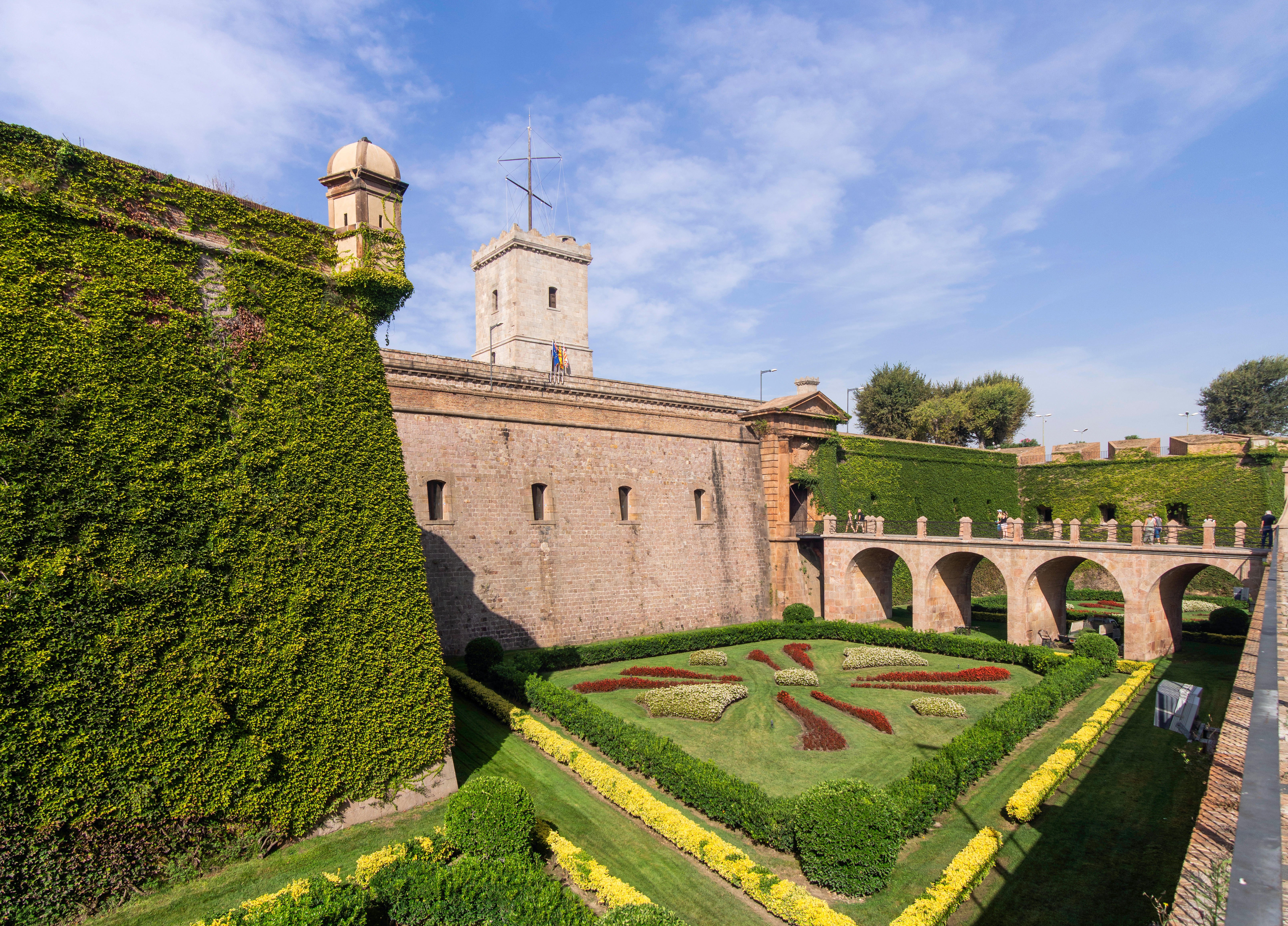The Montjuïc mountainside has several great attractions, all near each other. With the Castell de Montjuïc, Museu Nacional d’Art de Catalunya, and many parks and gardens, there is something for everyone! Whether you would like to walk up to the castle alongside the gardens or take the Telefèric de Montjuïc, you will have some of the best views of the city. Follow this guide to learn more about what a day trip to Montjuïc offers.
🚉 Day trip to Montserrat: history, transport, things to do and much more!
🎨 Figueres and the Teatre-Museu Dalí: everything you need to know for a Salvador Dalí day trip
History and importance of Montjuïc
Castell de Montjuïc has a controversial history in the city. The fort saw its first battle in the 1600s, and since then, has been in used by both Spanish and Catalan forces to wage war. At times, the fort has been used to defend Barcelona, but at many points, it has been used to besiege the city. Physical evidence of previous tyranny exists to this day. Some of the castle’s cannons are pointed out to the port, but many are pointed down at the city. The castle’s role in the Spanish Civil War has made it infamous in Catalan history books. Control of the castle was eventually transferred to the Barcelona City Council in 2007, and Franco's military museum was closed and replaced by other exhibition spaces.
How to get to Montjuïc
The journey to Montjuïc is simple and there are several easy ways to get there. Depending on how far up the mountainside you want to go, different bus routes can take you all the way to Catalunya’s national art museum. You can also take the funicular rail line up the hill from Paral·lel metro stop. And from the top terminus of the funicular, you can reach the castle at the very top, either by purchasing tickets to the nearby Telefèric de Montjuïc. Or else, by hiking. The telefèric has an amazing aerial view of the city, and it is much faster than walking, but you will need to buy tickets as they are not included in metro passes. The hike isn’t too long, but it’s several hundred feet worth of stairs and not for the faint of heart!
Castell de Montjuïc
At the very top of the mountain is the Castell de Montjuïc, the controversial castle that has both protected and punished Barcelona. The castle’s position at the top of Montjuïc comes along with some of the best views of the city. From Castell de Montjuïc, you can see the entire city and the port at the same time. There's also a centre of historical interpetation.
Museu Nacional d’Art de Catalunya
While not quite at the top of the mountain, the Museu Nacional d’Art de Catalunya’s headquarters in the National Palace has an amazing view of the city and Plaça d'Espanya below. The museum has an extensive connection of Catalan art, with art collections dating back to the 11th century and a notably diverse collection of Romanesque pieces. The museum also has a huge photography collection and a library. There are also some other important art museums on Montjuïc: two key locations are the Fundació Miró, featuring a huge collection of works by one of the genius Catalan painters, Joan Miró; and the CaixaForum, a large multi-space gallery which often features major touring exhibitions. Or what about the remarkable Mies van der Rohe Pavilion, a structure built by the famous German modern architect in 1929?
Montjuïc’s hillside
In fact, Montjuïc’s hillside has many notable attractions that make the area worth exploring. For example, the hillside has the Jardí Botanic de Barcelona alongside several other botanical gardens. The hillside also contains Barcelona’s Olympic stadium from the 1992 Olympics. The area has Olympic swimming pools and rugby fields that are still used today, and the Olympic Stadium is used as a venue for concerts. For the current 2023-24 football season, it is the home ground of FC Barcelona while the Camp Nou stadium is being rebuilt.

